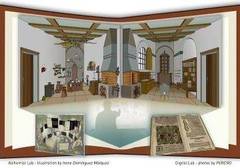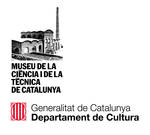22 October 2013
Experience ancient books in 3D thanks to MUBIL project
We recently covered with a feature the state-of-the-art in the digitisation of Cultural Heritage. Having an accessible, digitised collection of items is certainly a key factor in today's valorization of museums' and institutions' collections.
The Gunnerus Library of the Norwegian University of Science and Technology, the country's oldest scientific library, started from the Cultural Heritage's digitisazion concept and eventually merge it with an Augmented-Reality environment.
The results is the MUBIL project, which aims to bring the consumption of Cultural Heritage to a next level. As described by its promoters, MUBIL is a "novel learning framework based on Virtual Environments technologies" aiming to "disseminate the content of library archives, especially manuscripts and Libri Rari".
Given the difficulties related to the fruition of those particular kind of Cultural Heritage, even in a digitised form due to the old languages used, it was clear to the Gunnerus Library that a new way of fruition and dissemination was needed in order to spread the value of those pieces expecially among students and younger generations.
The Library find thus necessary to find an innovative way to valorize at the best its written heritage, thanks to the collaboration with the Laboratory of Perceptual Robotics (PERCRO), part of the Institute of Communication, Information and Perception Technologies (TECIP) of the Scuola Superiore Sant’Anna in Pisa, Italy.
Together they developed several concepts aimed to foster the dissemination of the Library's heritage, all of them developed starting from the "edutainment" concept.
Among them, the concept of the "augmented book" is one of the most innovative. Thanks to the possibilities offered by the newest technology, MUBIL managed to create an interactive experience within the Adam Lonicer's "Kreuterbuch" (1597), an important milestone in the history of medical distillation. While going through the book in an immersive 3D environment, in fact, users can experience pages and illustrations coming alive in front of them, all enriched with many multimedia contributions such as pictures, movies, animations and audio narrations.
The MUBIL project shows therefore a possible, interesting evolution in the field of technologies applied to Cultural Heritage, and perhaps this concept could be adopted and transformed also by other institutions, thanks to community-driven, open source projects such as OpenExhibits.
If you want to discover more about MUBIL, visit the project's website and its related blog.
Stefano Sbarbati
back







